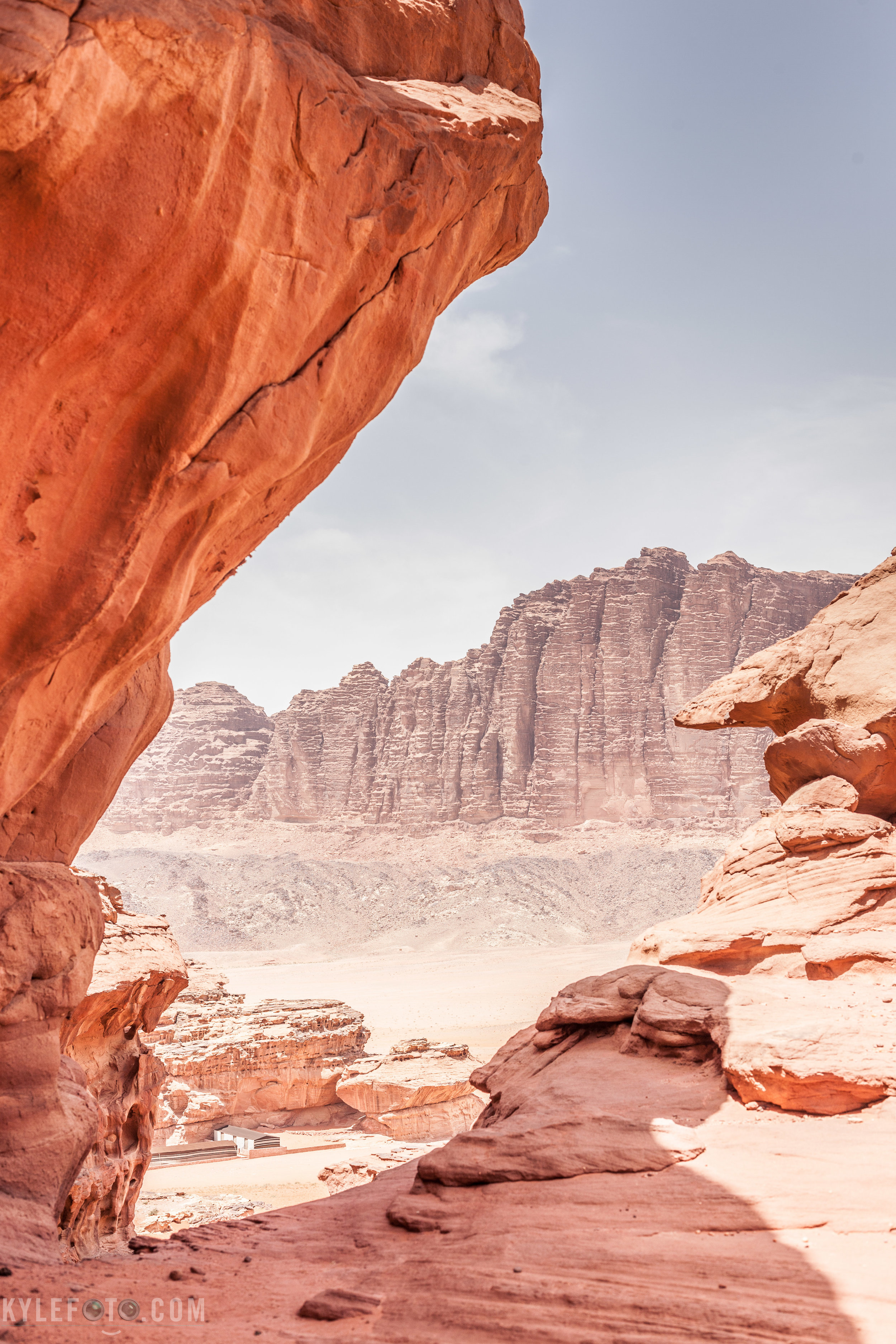Wadi Rum, Jordan I rarely get the chance to photograph myself, but when I do I don’t do the typical one armed pointing the camera at my face with something in the background thing, for me that’s too contrived. The thing I like most about my photos is that they are shot just the way I see them, and express exactly what it was like to be there. Because of that every scene is an extension of myself and my experiences. Because of that the need to plop my face in front of the camera to express where I’ve been is moot.
However I wanted to express that after a long day wandering in the desert, I just plopped myself down and watched the camels graze. The two front legs of the animal are hobbled just like what’s depicted on the petroglyphs I posted yesterday. This ancient practice keeps them from galloping off into the sunset, and instead they graze on the sparse but nutritious grasses popping out of the sand without straying too far from “home”. Including my feet was the perfect way to express this unusual relaxation scene that I found myself in.
Photographic details: I used a higher aperture of f9 to keep things sharper, but not too sharp so the image will lose depth. Using a wide angle lens at 35mm helped to easily keep my legs in the shot. I just laid back in the soft sand, got comfortable and snapped a few shots while the camel was chewing his cud. I would have preferred the camel move a little to the left but I think that was asking too much of him on his down time. Normally I could have moved to the right to get the camel in the right position but I would end up falling off the sand dune.
Camera Settings: 1/100s f/9.0 ISO200 35mm








